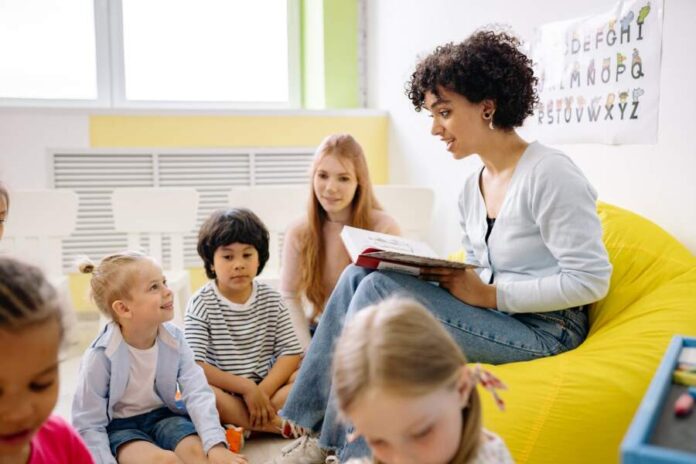Every classroom consists of various students. Some contribute enthusiastically in discussions, while others are reluctant to engage in collaborative activities. And that’s why you’ll find most educators motivating these introverted students to participate frequently in classroom conversations.
However, online lectures have made this challenge more worrisome as digital portals serve as barriers to effective communication for some students. How do teachers ensure that students are engaged during online/physical classes? While it isn’t easy to engage every student, several tactics prove helpful in grabbing the attention of most of them.
Let’s discuss them:
Ways to make students more engaged
Statistics have revealed that one-fifth of students are “consistently disengaged” in the classroom. Experts label it as the “dead time,” during which students are distracted and not involved in the learning process. The “dead time” is contagious as it may even compel engaged students to stop paying attention.
The PEW research surveys show that students only utilize 37% of the information they learned in the classroom, making classroom learning redundant. So, boosting your students’ engagement has become a concerning challenge for teachers today, especially those who educate special children. Now, these eight tips can help educators enhance everyone’s participation effectively:
-
Cater to each student’s multiple intelligences
While instructors often try to engage students by creating an immersive teaching environment, much more needs to be done. Since every student sitting in the classroom has varying talents, skills, and intelligence levels, it’s crucial to keep all of them on the same page. And this is specifically essential for instructors who teach special students. Some students grasp complex concepts and information quickly, while others take time. For this purpose, teachers should learn the ropes of teaching students with special needs and addressing their multiple intelligences. And what’s better than leveraging online learning in today’s digitized era for your academic endeavors. So, we advise teachers and educators alike to benefit from masters special education online programs to cater to each student’s needs effectively.
-
Allow for mistakes
Many students are hesitant about participating in classroom discussions because they’re afraid. The fear of being wrong, making mistakes, and facing ridicule prevent them from engaging. So, educators should allow for mistakes to motivate introverted children to come forward with their opinions.
Create an atmosphere of trial and error in the classroom where they aren’t judged for their mistakes. Allow students to learn from their errors to boost their confidence.
-
Avoid empty compliments
Many teachers understand the importance of giving regular and positive feedback to students. However, they don’t know the difference between hollow and meaningful compliments. Research shows that telling students “You’re smart” lowers their efforts since they start to believe that success comes from factors they don’t or can’t control. Therefore, teachers should instead give them positive yet specific compliments.
That’s how you can motivate students to improve their performance and enhance engagement. On the other hand, teachers who don’t provide feedback can often lower students’ self-esteem. So, ensure to value a student’s participation.
-
Make lessons interactive
A traditional classroom contains one teacher lecturing before the children who’re busy taking notes furiously. This model must change today, and educators should make their lessons interactive to gain students’ attention. It means that teachers should involve children by eliciting their responses and opinions to keep them engaged. Another strategy involves students being divided into groups. The teacher presents the content, and then each group discusses and shares views on the subject matter. They research several subtopics regarding the study material and even give small presentations after finishing their investigative efforts.
-
Create fun games
Experts have found that gamification enhances student engagement and bolsters their performance by 7% by removing barriers to learning. It incorporates the concept of point-scoring and beating the competitor to keep everyone involved and enthusiastic. That’s why schools have spelling bee competitions, as it improves students’ vocabulary by leveraging entertaining activities. Thus, lessons disguised as simple games are effective techniques for disengaged children. So, start crafting immersive games for your students.
-
Use movements often
Studies show that students learn better with movement-based instructions. But what is movement-based instruction? It involves several strategies, ranging from creative group projects to hands-on science experiments. Moreover, movements boost neuropathways and enhance a student’s memory. We have seen teachers asking students to clap their hands and stomp their feet while chanting poems. Many children learn better when they create rhythms and snap their fingers. That’s how education stays engaging and exciting for them, and this strategy works even for your online classes.
-
Break the cycle
What’s the thing students find most boring in the class? Monotony! When the same learning cycle is repeated daily, it makes students disinterested in their lessons. And that’s why teachers must change their teaching strategy and include spontaneous enjoyable elements. For instance, you can take them outdoors or organize a local museum tour. Or, you can urge them to organize storytelling and other activities in the classroom. The possibilities are endless. We need teachers to be more creative when delivering lessons to break this cycle of monotony.
-
Leverage technology
If there’s one guaranteed solution to keeping today’s generation engaged, it’s undoubtedly technology. Nowadays, students prefer the use of technological tools and gadgets in classrooms. And educators have also realized the significance of leveraging technology in the classroom. It improves students’ engagement while also easing the burden on teachers. Nonetheless, introduce technology gradually and strategically by ensuring that every student knows how to utilize it. If you start incorporating every educational technology available these days, you’ll only confuse students and eventually frustrate them. So, a gradual implementation should do the job well.
Conclusion
Keeping students engaged is undeniably no easy task, especially in today’s era where students quickly lose interest. Students these days prefer immersive environments that are void of monotony and tedious assignments. So, how can educators boost their engagement? They can share exciting facts and stories in their lectures and ensure they are well-crafted to grab students’ short attention span. Also, address different learning styles and students’ multiple intelligences. Likewise, you can incorporate gamification in your lectures to engage the class. However, it’s equally essential for teachers to be involved themselves to ensure that students enjoy their lessons.



































































